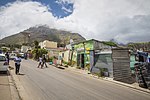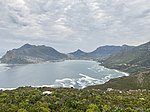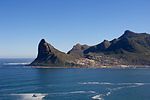World of Birds Wildlife Sanctuary and Monkey Park
Aviaries in South AfricaBuildings and structures in Cape TownMonkey parksTourist attractions in Cape TownZoos in South Africa

World of Birds Wildlife Sanctuary and Monkey Park (often shortened to World of Birds) is an avian, reptilian and wildlife sanctuary in Hout Bay, a suburb of Cape Town in South Africa. As suggested by its name, the focus is primarily on birds and monkeys. It is the largest African bird park and among the bird parks in the world with the higher number of species.
Excerpt from the Wikipedia article World of Birds Wildlife Sanctuary and Monkey Park (License: CC BY-SA 3.0, Authors, Images).World of Birds Wildlife Sanctuary and Monkey Park
Valley Road,
Geographical coordinates (GPS) Address Phone number Website External links Nearby Places Show on map
Geographical coordinates (GPS)
| Latitude | Longitude |
|---|---|
| N -34.0175 ° | E 18.3625 ° |
Address
World of Birds
Valley Road
7806 , Cape Town Ward 74
Western Cape, South Africa
Open on Google Maps










